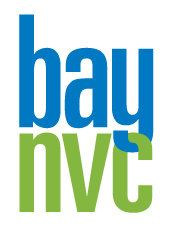In my previous piece I talked about what privilege is, and how its invisibility makes group dynamics so challenging when diversity is present.
Walking toward Togetherness
How do we address these historical and present challenges? What can we do, especially if we are people with privilege, to transform these conditions? Guilt and shame, though prevalent, too, are not likely to contribute, because they maintain separation. What I believe is needed is a way to face the excruciating pain and grief together, and forge ways together. The issues are structural and societal, not individual. Ultimately, the solutions will be, also. In the meantime, however, whoever is in the room, that particular collection of individuals, can learn to face the intensity using every tool available and more, so that they can learn to work together, and in the process put a drop in the bucket of showing that diverse groups can, indeed, work together.
However challenging these kinds of situations are, and whatever our position, we can move towards more inclusivity by learning and doing significant inner and outer work. To begin with, we can develop our understanding of the dynamics of power even when there are no explicit power-over or structural power experiences. If we are in a position of privilege, we can learn to trust what we hear from others, so we can learn to discern what happens which was previously opaque to us.
In addition, rather than waiting for people of color and/or working class people to join white- and/or middle-class-led organizations, those of us with privilege can join people-of-color-led or working-class-led organizations and learn to follow the lead of others. One of the ways that privilege works is that we are accustomed to knowing the answers and leading the way, and we continue to act in those ways. Without intending harm, just following our habit and what’s familiar, we create conditions that reinforce the power dynamics which are invisible to us and intolerable to others. By learning to follow others’ lead we change the dynamics and learn to work together.
Such capacity to work together is a necessity, not just a nice addition to our work. I am confident that the hard work of coming together and the collective actions that might arise from it are an essential ingredient for creating the level of togetherness and active interdependence necessary to bring about a social order that transcends separation while making room for differences and where people matter regardless of how their humanity manifests.
If you are drawn to learning more about this rich and charged area, and especially if you want to engage with others across race and class differences, one powerful opportunity for you is to join the 5th annual NVC and Diversity Retreat taking place July 23-30 in Northern California.
If you want to learn more on your own about privilege and its invisibility, you could get started by reading “White Privilege: Unpacking the Invisible Knapsack” By Peggy McIntosh, which is posted widely on the internet, and by watching “The Color of Fear” directed by Lee Mun Wah.




I love the idea of people who have historically had privilege joining organizations led and inhabited by people who have historically been lacking in it. Well said!
ReplyDelete